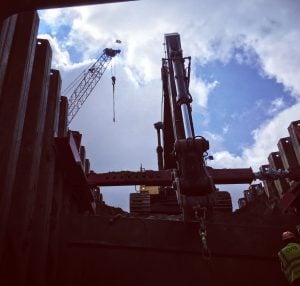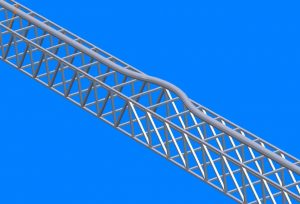Cast-in-place concrete is a popular method of new construction. It can be cost-effective, efficient, and yield aesthetically pleasing results. The key to a successful cast-in-place concrete structure is always pre-planning. Here we will discuss the principles of horizontal concrete construction.
Ask Now, or Forever Expect Phone Calls…
Locating columns, walls, and drawing the building lines is the easy part of starting any project. Then the hard stuff begins: what is the most efficient way to lay out the formwork? What is the desired formwork system? During what time of year will the construction take place? What type of hoisting equipment will be used? Who is going to install it? How must the project move? Are there specific details installers want to see? Asking these questions in advance of starting construction will save plenty of headaches down the road.
Simple is Better
“The maximum span for this stringer is 5′-2 3/8”.” It is much easier for the installer to lay out 5’—10’—15’—20′. When shoring is laid out in CAD, do not be afraid to use the text override command. Round down to give more wiggle room. For example, a member may lay out to 5’-1 3/16” to clear a column, but override this dimension to simply say 5′. Let the field installers make minor adjustments, and keep the numbers simple.
Move It!
The first pour is always the most anticipated since there are (typically) no overhead obstructions, there is a clean slab area only for the formwork subcontractor, and the material coming out is fresh. What happens after that first pour? How does the material get from the first pour to the fifth pour? The key is to know the system and to establish a material movement plan. If the only option of moving the material is with carts and forklifts, keep the shoring generously spaced to accommodate this movement. This may mean doubling or even tripling stringers, clustering shores, or any similar means of creating a clear pathway. Draw attention to these areas on the shoring plans to make sure they stand out. Material movement is fundamental for efficiency.
Stock It!
Moving material out of a stripped area is only part of the equation. Efficient formwork engineering also requires planning for post-pour activities. What types of hoisting and/or material movement equipment will be required by the stripping crew? What kind of reshore system is going to be used? What are the required quantities? Check if the shoring system can be used as the reshore system. Make sure the shoring will work at a taller height when the formwork is removed; this is a common mistake. If your existing shoring/formwork system is not going to be used as the reshore system, stage reshores under the shoring as it is erected. As the forms are stripped, the reshores are ready and available for use. The same can be said for hoisting equipment. Always trap a forklift or scissor lift where the project supervisor wants to start removing the formwork after the slab is poured.
How Heavy Is That?
Formwork weights are critical pieces of information, both for the designer and for the field personnel. Be sure to call out weights for panels and typical units of equipment, along with quantities. This will keep the guesswork to a minimum and help avoid those situations where the crane or forklift cannot pick up a given load, requiring the load to be broken down and restacked into smaller bundles.
Overall, the design of formwork will involve just as much scheduling and coordination as it will engineering. As with all other aspects of construction, planning is the key to success. Keep these tips in mind and your project will see an increase in efficiency and a decrease in your stress level.














